
Skyrunning is said to be a fusion of trail running and rock climbing; an 'extreme sport' suited to mountain-loving adrenaline junkies who dice with death on exposed ridges and loose descents. Keri Wallace takes on the inaugural Pinnacle Ridge Extreme race and speaks to the pros to find out if this caricature is really true.
How do you pace yourself when the first half of a race is easy trail running and the second half hard scrambling? 12km into the new Pinnacle Ridge Extreme (PRE) race and this is exactly what was nagging at me. I hadn't even started the proper climbing sections yet and already I was feeling beat. Surely this was going to end badly! What I did not expect, was that as soon as my hands touched the rock at the bottom of the first graded scramble, things suddenly got a whole lot easier for me. The climbing felt like a rest and the ridge running was pure joy. As someone who would previously have described themselves as more of a climber than a runner, I started to wonder how beneficial rock climbing experience and ability might be to performance in extreme skyraces such as this.
What UK skyraces lack in altitude they make up for in technicality, and as a consequence ours are some of the most gnarly on the international circuit.
As races become more technical, they will revolve as much around climbing-related movement patterns as trail running technique
The PRE has four scrambling sections, graded 0.5 to 3. There are roped climbs and highly technical descents, over a distance of 28km - with a whopping 2700m of ascent thrown in for good measure.
The race is unique in being much shorter than any extreme skyrace in Europe (it's like a 'half- Tromsø Skyrace'), meaning that this is no ultra-distance event, and scrambling sections can be tackled faster than ever before. The PRE is the brainchild of Race Director Charles Sproson, and is pending official International Skyrunning Federation (ISF) status for 2020.
As I approached the roped sections of the route I heard my inner 'trad voice' whisper "don't you DARE pull on those ropes! What kind of style do you call that?" And so I was flying, bouncing over Brown Cove crags, Swirral Edge and Striding Edge (after pretty much crawling to the bottom of them!). On Pinnacle Ridge on St Sunday Crag, one of the safety marshals shouted "oh hello, we've got a climber here!" I joked about being very much "out of remit by running all this way" but wondered whether in fact it was true. Surely this has to be one of the few races where rock climbing experience might actually pay dividends?
Vetting for Extreme Skyrunning
"There's no doubt that having a climbing background makes participation in technical skyraces easier. Not only does it make the race more achievable, but it is also the route to an entry, with some races having a vetting process that requires prospective participants to demonstrate their climbing experience" says Shane Ohly, Race Director of the Salomon Glen Coe Skyline and former professional rock climber.
To enter the PRE "you need to prove your climbing skills through a strict vetting process that includes graded solo scrambling (2/3), low grade to high grade rock climbing (leader experience necessary), bouldering or winter climbing" says Sproson. "This is a complete requirement to gain an entry - no climbing experience, no race."
For some it might seem surprising that bouldering or winter climbing is considered valid experience, but "this is because bouldering skills enable competitors to easily 'solve' the problems they encounter on hard scrambling terrain, while winter climbing experience requires a level of self-knowledge and familiarity with exposure that is all relevant to skyrunning" Sproson clarifies.
Race Director of the new Snowdon Skyline extreme skyrace and elite UK ultrarunner Michael Jones can fully appreciate why this kind of vetting for climbing experience is essential: "It is a Race Director's duty to ensure that all potential entrants are well informed as to the severity of the course in terms of its technical sections or graded scrambles, and what this means in layman's terms, so as not to lull anyone into any false sense of security from the outset" he says.
Experience is essential in a sport where the consequences of leaving the start line unprepared could in a worst-case scenario prove fatal
"Accidents can and do happen, even to the most experienced, so accruing pre-event experience is essential in a sport where the consequences of leaving the start line unprepared could cause the event mountain safety team some easily avoidable work, and in a worst-case scenario prove fatal."
But climbing experience doesn't eliminate all the risk of course. "A lack of appropriate endurance or conditioning for an event can sometimes pose more of a risk for hands-on technical sections, than a lack of scrambling experience per se" points out Eunan Quinn, Race Director of the new Seven Sisters Skyline.
Performance
So previous rock climbing experience is necessary for reducing accidents. But what about the runners on the ground; do they actually benefit from these prerequisites on race day?
Ultra Skyrunning World Champion Jonathon Albon advises that: "while it may not feel 'necessary' to have rock climbing experience (as in grade 4 or harder), if you have practised rock climbing it will improve your scrambling skills, which can only be a good thing when faced with any technical sections."
Holly Page, 2018 female Sky World Champion confirms that "in some races you really do need three points of contact and a lot of concentration, and here it certainly helps to have confidence and experience of quickly knowing where to put your hands."
By way of example, Albon recollects; "during the Glencoe Skyline when going up Curved Ridge, I spent an extra few seconds feeling around for a good handhold, and in this minute pause, the person ahead of me (Kilian Jornet) had gained nearly 10 meters!"
But it's not simply about making small gains in the moment, there is also a more strategic advantage over the full course of the race.
"Being a confident scrambler and moving efficiently over exposed and technical terrain not only makes it possible to maintain a steady pace throughout, but also gives the mental resilience to cope with technical challenges when tired, in the later stages of the race" says the 2018 Skyrunner Extreme Series World Champion, Jasmin Paris.
Sproson believes that this efficiency on rock is underpinned by "strengths and skills that are specifically possessed by climbers and mountaineers - namely considerable core strength and movement patterns that are second nature. Prior climbing and bouldering experience translate into an ability to unlock technical terrain without even thinking about it" he says.
Jones agrees, summarising this particular attribute as a "physical ability and mental capacity to coordinate all four limbs quickly whilst 'reading' the route, and simultaneously propelling oneself upwards."
But most skyraces are ultra-distance events and graded sections are relatively brief. It's therefore important not to overstate the role that climbing has to play.
"Efficiency, speed and confidence on scrambling sections can make a big difference in races, but not nearly as much as uphill or downhill running/hiking speed. It is rare that the last kilometres of a race feature super technical terrain and this is most likely where the race is decided" says Albon.
However, over many miles, small efficiencies accrue and tiny benefits are compounded.
"If you break a race route down, the more severe the elevation profile of the skyrace, the more time will typically be spent climbing, compared to descending or running flatter transition sections, and so this in-race advantage widens even further" says Jones. If skyraces trend towards greater levels of technicality or higher ascent to distance ratios, then the potential in-race benefit of conditioning for climbing will increase.
What then if short and super technical events become more popular? Something to offset the meteoric rise of ultrarunning?
"I certainly don't see a future for these shorter extreme races. They are just too technical and the numbers of participants capable of safely completing them (within the time limits!) is too small" says Ohly.
But what's for sure, is that the number of extremely technical skyraces appearing world-wide is increasing every year; popular events such as Trofeo Kima, Tromsø Skyrace, or Limone Extreme, with Skyrace des Matheysins and the Matterhorn Ultraks Extreme both new for 2019 (the mandatory kit list for the latter even requires that runners carry micro-crampons!)
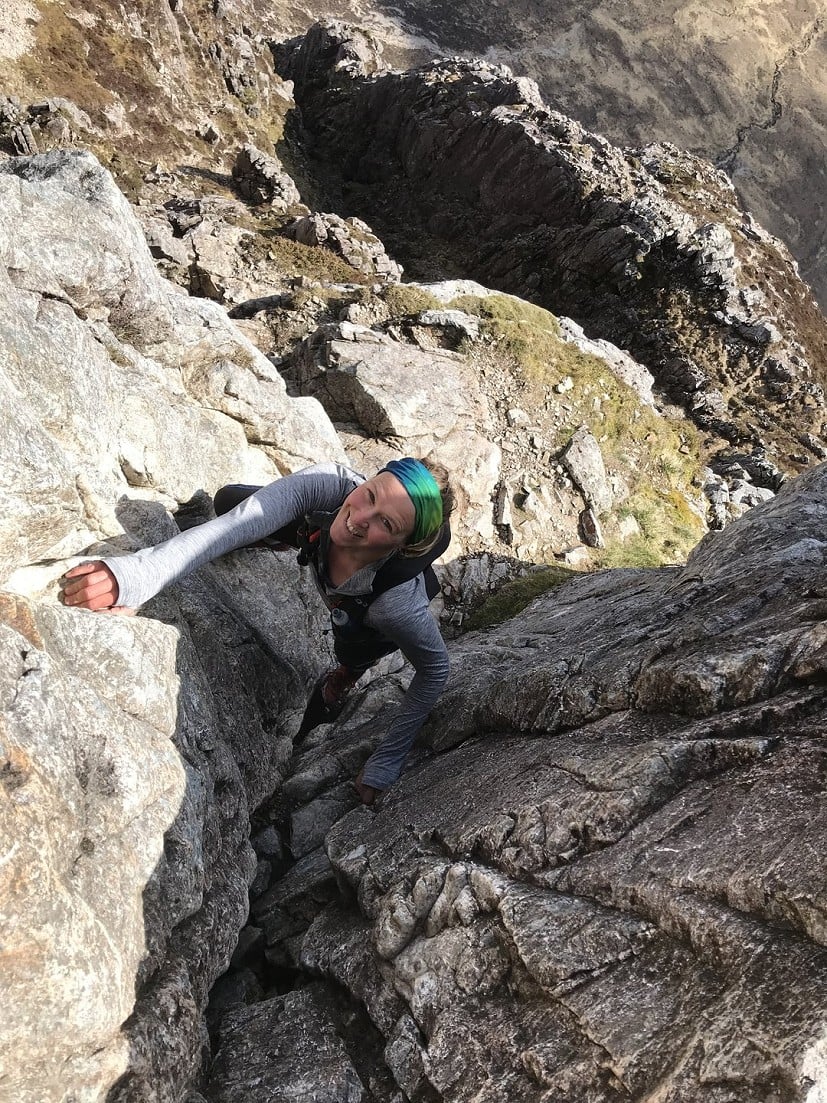
Training for Extreme Skyrunning
Skyrunners come is all shapes and sizes, and from a variety of sporting backgrounds, including trail running, mountain biking and obstacle course racing (OCR), as well as rock climbing and mountaineering. Can cross-training with rock-climbing or bouldering help prepare the extreme skyrunner?
As skyraces become increasingly technical, they will begin to revolve as much around climbing-related movement patterns as trail running technique, and so to achieve 'training specificity', this will need to be reflected in the cross-training carried out ahead of such events. In other words, "the most effective training will be specific to the movements done, and at similar speed and intensity of climbing" – Training for the New Alpinism, Steve House & Scott Johnson.
"I know from chatting with many of the leading racers that they consider their cross training approach important. The combination of 10,000m vert running with one or two climbing sessions each week being a highly specialised combination!" says Ohly.
Salomon athlete Rob Sinclair, who won the PRE in an unbelievable time of 3:57:02 says "extreme skyrunning is definitely an all-over body workout, so preparation through strength and conditioning at the local climbing wall and gym helps with moving more efficiently over that terrain."
As well as being a skyrunner, Jonathon Albon is OCR world champion; a sport which requires all-round endurance, strength, speed and dexterity from its competitors. It is telling, therefore, that his attributes as an athlete and composite training translate so well into extreme skyrunning, where Albon excels:
"I have found that going bouldering can have a positive impact on uphill hiking on extremely steep technical ascents (even ones where your hands are not required)" he says.
"I have a route with two steep 500m climbs that I sometimes do after bouldering and always find that the effort is far easier and my heart rate lower after climbing. Perhaps the climbing is good stretching or prepares my legs for the continual effort of pressing my body up when hiking, or perhaps the bouldering develops micro-efficiencies in how I am moving uphill."
"For European skyracing, altitude is another key element to consider" says Sinclair. "Some races such as Trofeo Kima and the Yading Skyrun require specific acclimatisation, and most races in the international series have sections of altitude running that must be addressed in training" says Sinclair.
Extreme by Name, Extreme by Nature?
Extreme skyrunning, like rock climbing, is often (in my view mistakenly) regarded as an 'adrenaline sport'. This term, like 'extreme sport' appears to be used interchangeably with 'high risk' in much of the outdoor research literature. But as anyone who runs or climbs in the mountains will know, it just depends who is doing it.
"For someone with the right preparation and confidence, who is used to moving across similar terrain on a regular basis, an extreme skyrace does not need to be any higher risk than a regular hike in the mountains for someone with less experience" says Jasmin Paris.
"There is only 'real risk' if you don't have the skills, training and experience" agrees Quinn. "And this is where education and specific skills training (rock climbing, mountain skills training, survival skills etc) needs to be taught to runners who are new to the sport."
For those who are dipping their toe into skyrunning for the first time, is the reputation of skyrunning as an 'adrenaline sport' part of the appeal?
"The apparent high-risk element of skyrunning is certainly an attraction for some runners and climbers" says Sproson. "For some this level of risk is enough. But others need more, pursuing 'free-soloing', wingsuit flying, BASE jumping and so on. Skyrunning fits into a landscape where we can test and push ourselves, accept some risk responsibly and enjoy the freedom."
Interestingly though, for those who are more experienced and competent on extremely technical terrain, skyrunning is generally not about seeking out risk:
"When you're in a race situation, you're oblivious to the risk" says Page. "You're focused on the race and not the steep drops!"
This kind of focus or 'flow' in the mountains seems to be one of the most unique and engaging features of the sport, and probably what makes it so addictive.
"I've found competitive skyrunning to elevate the senses and narrow one's focus in a way that's difficult to replicate in any other sport, or indeed day-to-day life. To me it is the most aspirational expression of competitive mountain running, and a discipline that challenges and rewards both fitness and technical ability in almost equal measure" says Michael Jones.
About Keri Wallace
Keri Wallace is an experienced fell runner and a fell/trail running guide with Girls on Hills in Glencoe. She is also a keen rock climber and member of the Glencoe Mountain Rescue Team. She is a qualified summer mountain leader and climbing instructor, with Fell/Trail Leadership in Running Fitness (FLiRF) accreditation from the Fell Running Association. Girls on Hills Ltd delivers skyrunning courses and guided skyrace recce events for Skyline Scotland
- INTERVIEW: Anna Wells on the Winter Munro Round 25 Mar
- Top Tips: Camping With Kids 12 Jun, 2023
- REVIEW: Book Review: Voices From the Hills 19 May, 2023
- My Move to the Mountains: Life in Lochaber 16 Mar, 2023
- Hut to Hut in the Tyrol - A Family Adventure 30 Aug, 2022
- INTERVIEW: Nicky Spinks on the Lake District 24 Hour Record 9 Sep, 2021
- On the Ramsay Round with the Black Trail Runners 19 Aug, 2021
- INTERVIEW: In pursuit of purity: going solo on the Winter Bob Graham Round 25 Feb, 2021
- Desert Island Peaks: Keri Wallace 18 Jan, 2021
- Walk Before You Run - winter skills for hill runners 21 Dec, 2020

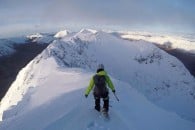

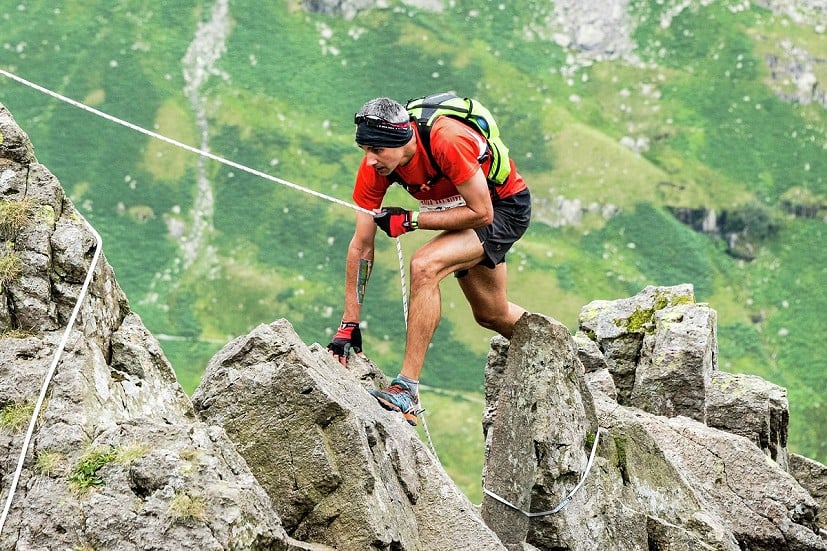
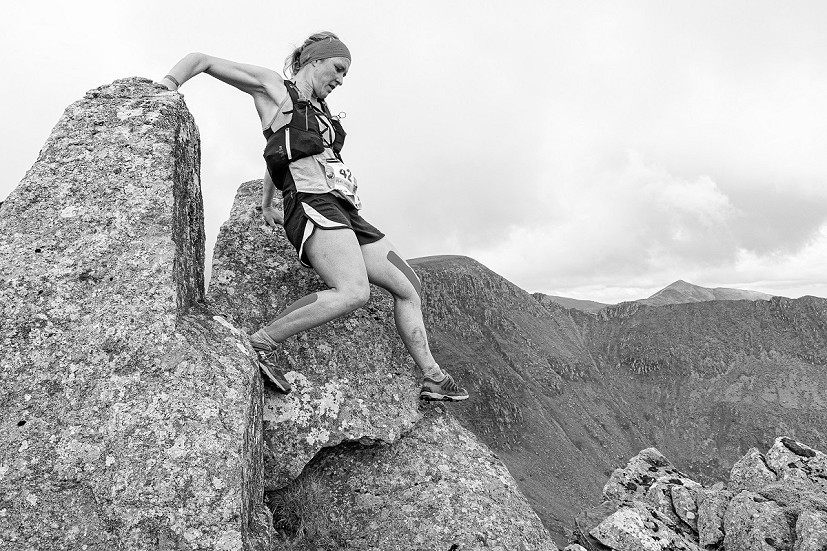
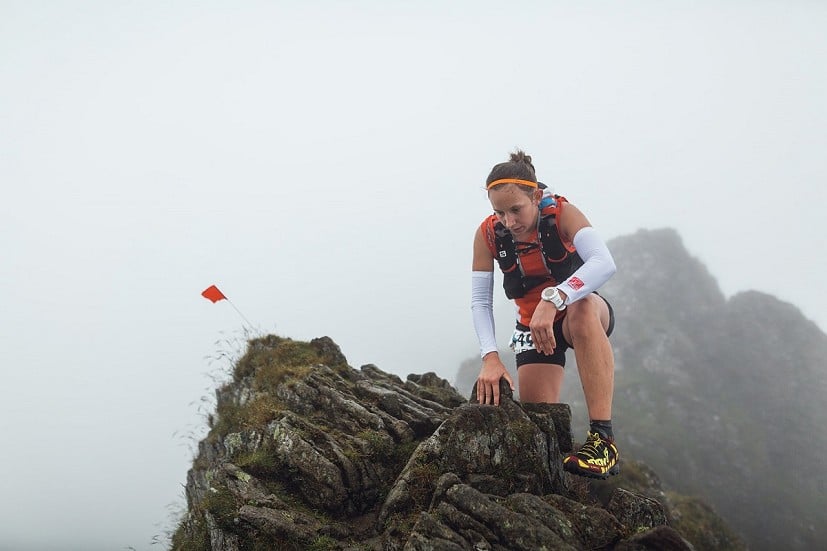
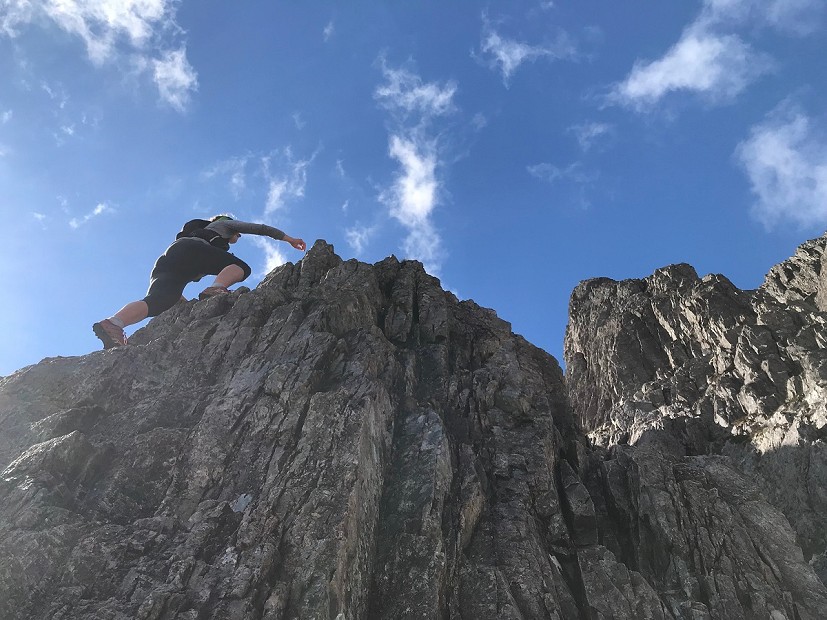
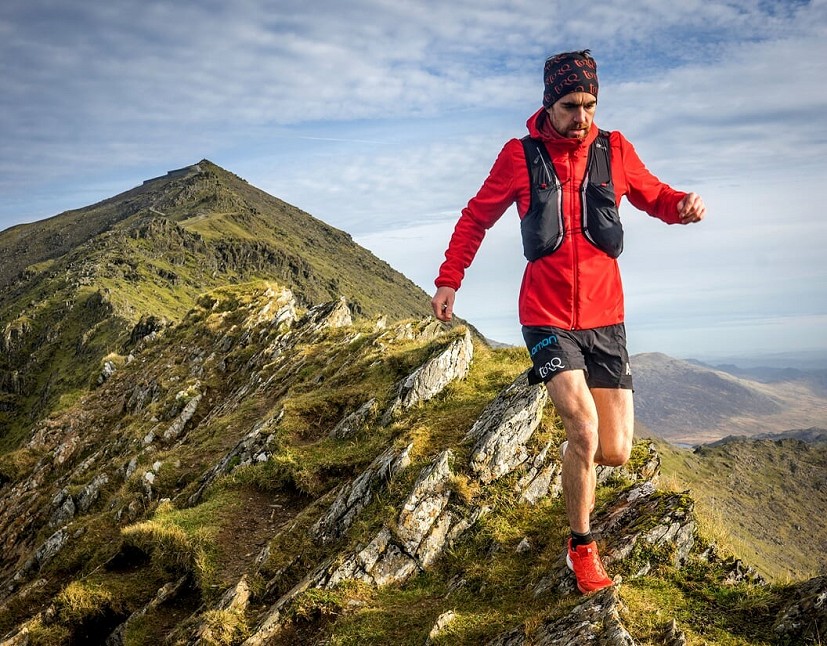
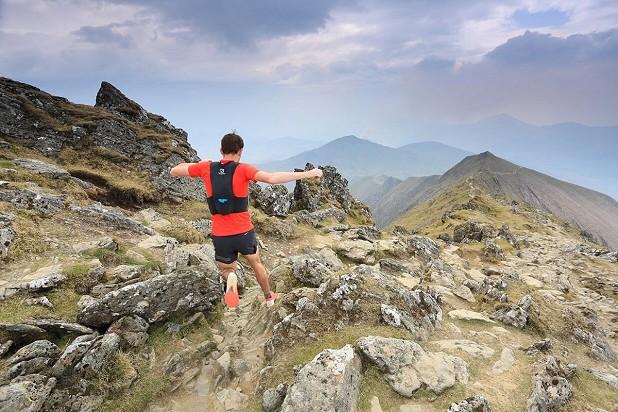
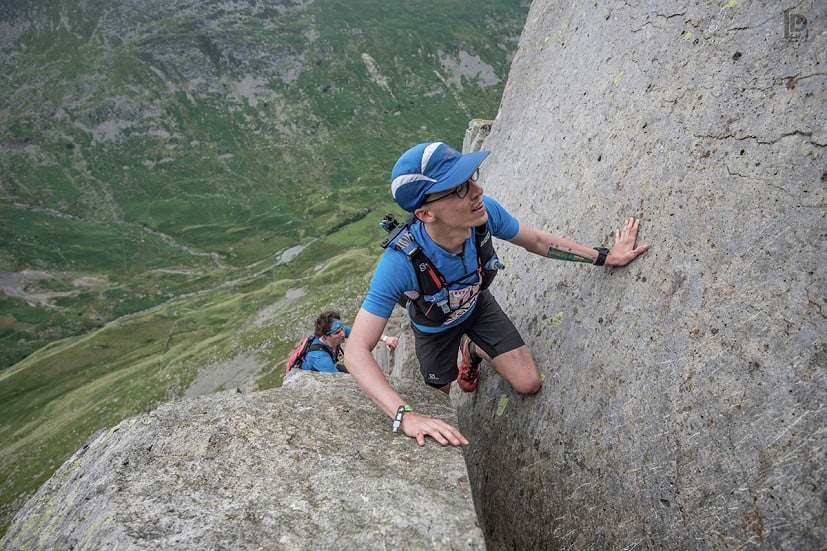

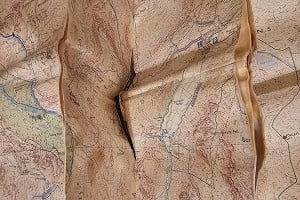
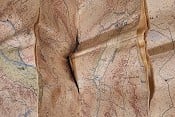


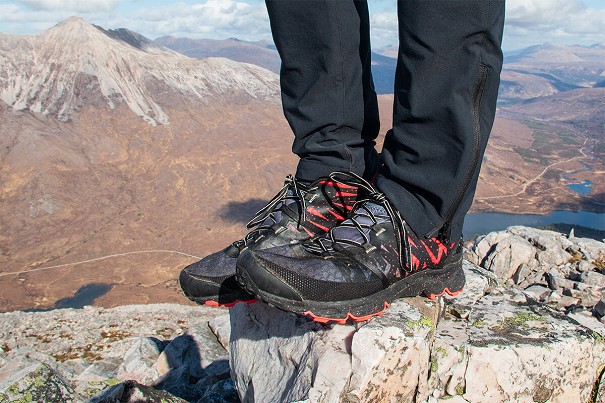
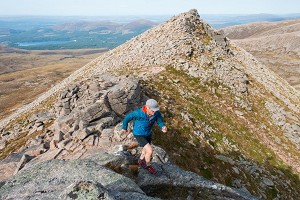
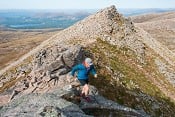
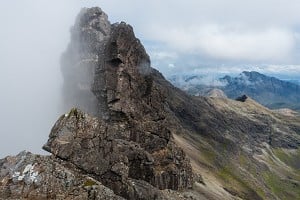
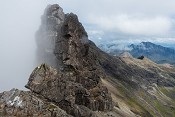
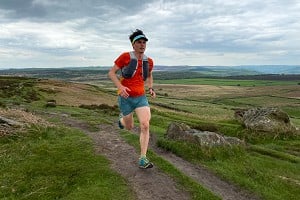
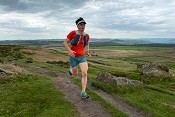
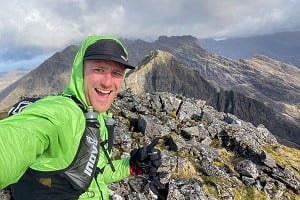
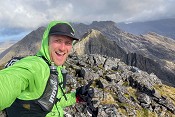
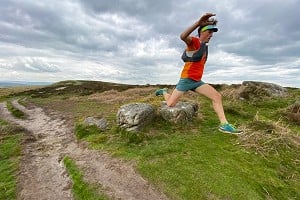
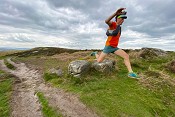
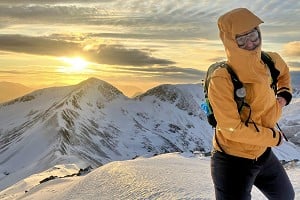
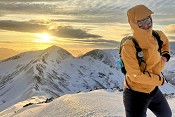
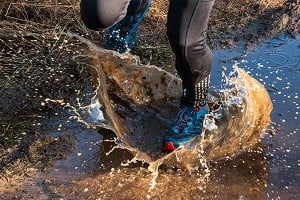
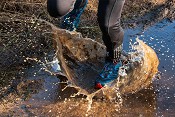

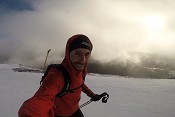
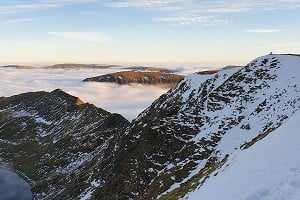
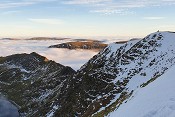

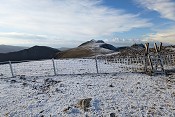




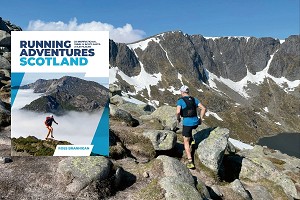



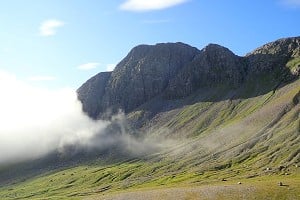
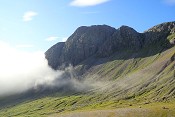
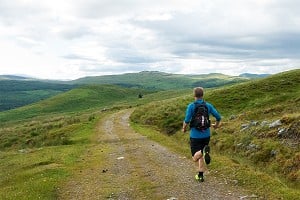
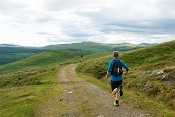
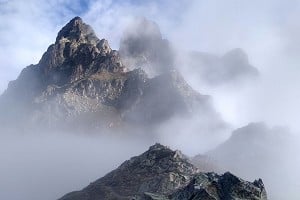
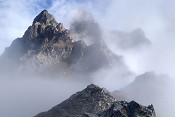

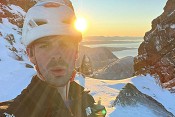
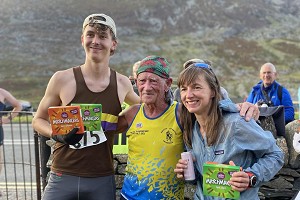
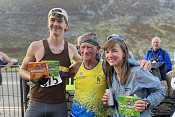
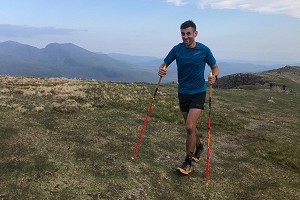
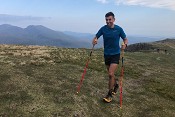
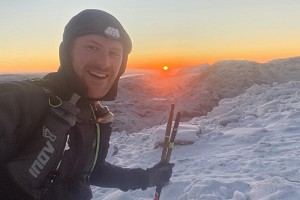
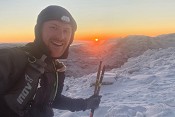
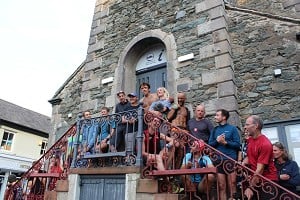



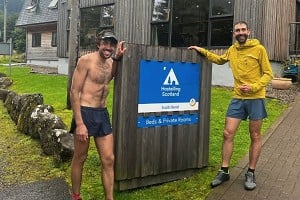
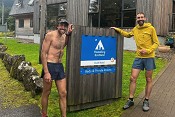
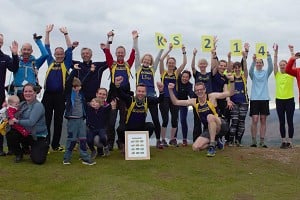

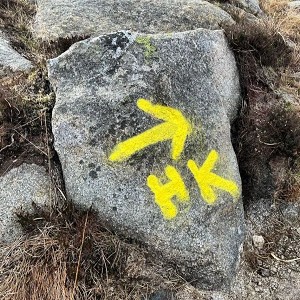
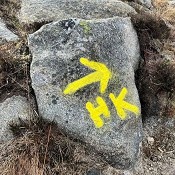


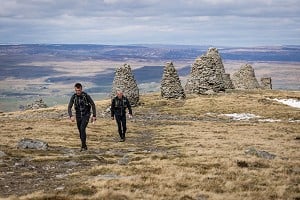
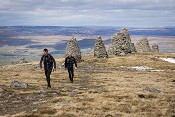
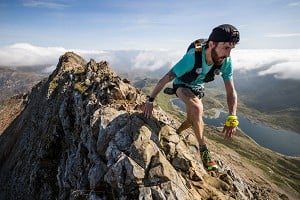
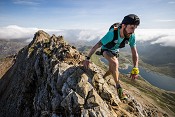

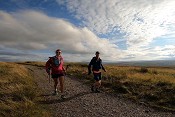
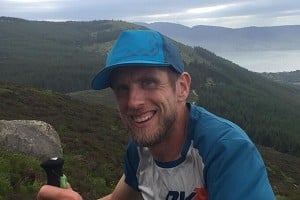

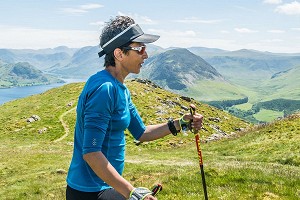
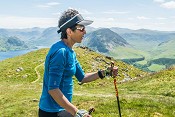
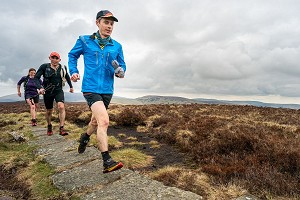
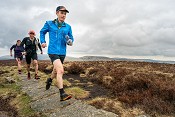
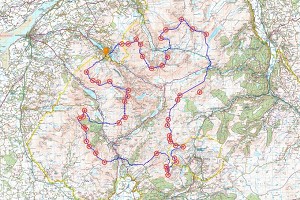
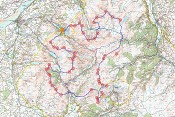

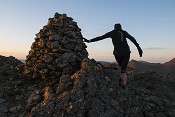
Comments
Just to add my small opinion to the mix... In general when I run in the hills I derive the most satisfaction from seeking out 'difficult' terrain, and moving over it quickly and efficiently. In other words, making that terrain feel 'easy'. I put the adjectives in quotation marks as difficulty is of course subjective. Ground that I love 'running' on would be too scary to be palatable to others, whilst at the same time there are many other 'runners' who can cross ground I can barely step foot on.
Steep ground with satisfying levels of exposure and reliable holds is usually a good recipe. That's why Curved Ridge is so popular with the shorts-and-trainers crowd. Rarely is such rapid vertical gain possible on such reassuring holds seemingly placed there to facilitate the exact feeling of "[coordinating] all four limbs quickly whilst reading the route, and simultaneously propelling oneself upwards" mentioned above.
There are times though when I like to stray from these 'confidence boosting' routes and onto ground that provides more of a question mark. Seeking out routes that are not known for running, or are reputed to be difficult, can bring a satisfaction of its own kind. Obviously this is not a domain that overlaps with the "racing" element of skyrunning, and will surely remain a subject of debate for many years to come. As people blur the lines of what's possible (even for amateurs) with light equipment, these questions will surface again and again.
Race insurers will now sanction running up Curved Ridge in poor summer conditions (i.e. moderate wind and rain), but I'm guessing that lean winter conditions would still be a step too far, although not necessarily any more difficult. This is when the comment of "there is only 'real risk' if you don't have the skills, training and experience" becomes truly relevant. The problem of course, is how do you make that judgement call?
Don’t know that I’m too impressed by the fixed ropes, this seems to be bringing the challenge down to a convenient level. I suppose it makes sense to iron out the hardest bits to get a consistent difficulty ... .
Personally I’ll always be more impressed by self-supported, or friend-supported, efforts as this feels more in keeping with traditional mountain culture.
It is good to hear how seriously race directors take the importance of a climbing/scrambling CV: the inexperienced are often unaware of their inexperience. I’ve met climbers who “have climbed HVS” who end up hanging on the toprope on VDiffs. Another person who had “recently soloed a 12 pitch HS” scared me silly belaying as he nearly killed himself leading a straightforward Severe (gear fell out and he looked very like he was going to fall off the topout with a full body elvis!). Overall it makes sense to have a fair amount of ability in hand, and well-developed judgement, to move fast yet safely on this sort of terrain.
When the Glencoe skyline first ran there was an interview with Shane Ohly and he said they rejected lots of people. He said it was usually pretty obvious from the entry i.e. mega porky pies like having lots of experience but not being able to tell about it because it was with special forces!
Well Shane would be able to tell a Special Forces fraud from a mile off. He has a long and illustrious record of service: http://www.thefreeclimber.com/articles/tfcSAS.htm
;-)
Got to say I feel slightly uncomfortable about technical scrambling/climbing being incorporated into a race situation. This quote stood out for me: "When you're in a race situation, you're oblivious to the risk" says Page. "You're focused on the race and not the steep drops!" Having difficult ground incorporated into racing would seem likely to lead to unnecessary risks being taken in the name of beating your rivals. It seems only a matter of time before a serious injury or death occurs?